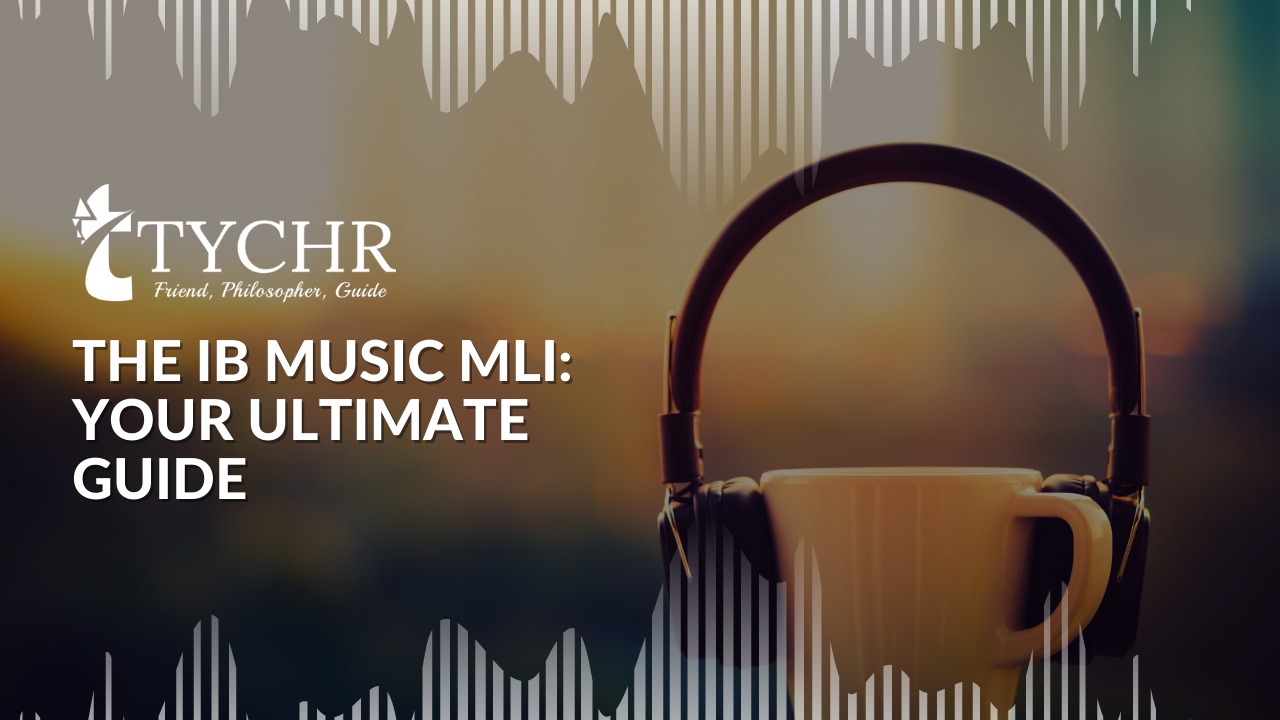Table of Contents
What is musical links investigation (MLI), I’m sure you’re wondering? I was in your position a few years back, but I managed to get a 7 in my IB Music MLI! How did I do it? Continue reading for my step-by-step guide on how to approach the musical links investigation for best results.
The Basics of Musical Links Investigation: Diverse Musical Cultures
Let’s make sure we all understand what the musical links investigation is, before we go into the specifications:
- An exploration of musical connections between two distinct musical cultures by considering one or more pieces from each culture.
- Compare and Contrast helps to demonstrate two or more significant musical links.
- IB Music MLI is a media script (interview, drama, website, blog, etc not more than 2,000 words.
- It makes up 20% of your final grade in IB Music
Exploring Musical Culture: What Does a Musical Links Investigation Include?
Let’s examine the overview of the assessment requirements of your MLI in order to explore musical culture.
- A comparison of two music pieces from two distinct musical cultures
- It needs to contain at least two musical links
- Establish similarities and differences between the music cultures
- Investigation and Evaluation on the music (primary and secondary sources)
- Written media script
- References
- Bibliography
- Discography
Musical Links Investigation Requires these Steps:
So, where do you get started? Continue reading for a comprehensive list of the five steps that I think you need to take in order to be on the path towards a marvelous musical links investigation!
Step 1: Choosing the Musical Cultures
Deciding on a good topic for your musical links investigation is arguably the most difficult and the most important step of writing. You are well on your way to finding an excellent topic if you can confidently check off the following!
- The two musical cultures are truly distinct – Avoid choosing the same musical culture or ones that have similar backgrounds, like “Rock and Roll” and “Jazz”. These may be considered as a poor choice of cultures as there is a direct cultural link from one to another. So, choose two cultures that seemingly have no common background. For example, Hindustani Music and Argentine Tango or Chinese Folk and Brazilian Bossa
- Make sure the musical pieces that you have chosen aren’t too long. In order to do thorough exploration, it will benefit you to focus on a fragment of a larger musical piece, or find a short musical piece of music to analyse. 2,000 words may sound like a lot to write, but in order to get into the nitty and gritty of musical analysis, it’s better to go narrow and deep rather than broad and shallow.
Step 2: Doing Your Research
Now when you have got an idea of two distinct cultures that you are interested in exploring, it’s beneficial to do a deep dive into the ins and outs of that musical culture.
Ask yourself the following questions:
- What are the common musical elements found in the genre?
- What are the distinguishing features of the genre?
- What is the purpose of the music?
- For whom was the music made and who performs it?
Make sure to use both primary and secondary sources in this research. It is at this stage that you may notice some similarities between two distinct musical cultures.
The whole point of the IB Music musical links investigation is finding commonalities in musical genres that may sound completely different to the untrained ear, so don’t shy away from similarities that may seem too far-fetched.
Then, go back to your musical pieces and see if you can hear the common musical elements from these two musical cultures that you have researched in the musical pieces that you have chosen!
Step 3: Finding the Musical Links between Musical Cultures
Make a list of all the similarities that you have found between your chosen musical pieces from the two musical cultures.
You’ll need to perform a deep dive into the two distinct musical cultures and relate the findings back to your musical pieces.
If you are struggling to find any similarities between the musical cultures, always remember MeMeHaMeFoStyCo (medium, melody, harmony, meter, form, style, context)! This will help you in making the musical connections that the musical links investigation requires.
Go through and make a list of some major differences between the different musical cultures as well. It will be easy to hear the overt differences in the musical examples, but try to challenge yourself in, for example, analyzing how the melody serves a different purpose in the two pieces.
Step 4: Choose the Format for Your Musical Links Investigation
Decide the format in which to present your musical links investigation.
Remember that you don’t get extra points for your format, so don’t spend too much time crafting the most authentic-looking newspaper article.
That time can be better spent refining your musical analysis, which is where almost all the points lie. However, making sure your format lends itself to a clear and organized structure in which the similarities and differences that you aim to analyze are clear to the reader is key.

Students normally choose a consistent format that typically follows one of these structures:
Example 1:
- Introduction
- Piece A (Analysis of Musical Element 1, Musical Element 2, Musical Element 3)
- Piece B (Analysis of Musical Element 1, Musical Element 2, Musical Element 3)
- Comparison
- Conclusion
Example 2:
- Introduction
- Musical Element 1 (Analysis of Piece A, Analysis of Piece B, Comparison)
- Then Musical Element 2 (Analysis of Piece A, Analysis of Piece B, Comparison)
- Then Musical Element 3 (Analysis of Piece A, Analysis of Piece B, Comparison)
- Conclusion
Step 5: Write!
When you’ve got your cultures, pieces, similarities, differences, and format, the only step left is to write the musical links investigation.
Don’t shy away from inserting excerpts of sheet music to aid your analysis in the musical links investigation.
If there isn’t any sheet music readily accessible, attempt to transcribe a section of the song to help explain one of your similarities.
A musical links investigation requires a thorough understanding and application of musical culture. The world of musical culture is fascinating with countless paths of exploration. The student’s musical links investigation will successfully satisfy the assessment requirements and attain top marks if the aforementioned steps are followed.
Ready to get started? Begin by considering which musical cultures interest you and take it from there. Before you know it, the musical cultures chosen will reveal interesting insights.
Frequently Asked Questions (FAQs)
Q1: What is the IBDP Music MLI?
A: The IBDP Music MLI (Musical Links Investigation) is a research project that is a mandatory component of the IB Music course. It requires students to investigate and analyze the musical links between two or more pieces of music.
Q2: What is the purpose of the IBDP Music MLI?
A: The purpose of the IBDP Music MLI is to develop students’ analytical and research skills, as well as their understanding of music theory and history. It also allows students to explore their own interests and musical preferences within the context of the IB Music curriculum.
Q3: What are the requirements for the IBDP Music MLI?
A: The IBDP Music MLI requires students to choose two or more pieces of music from different styles, cultures, or historical periods, and to analyze the musical links between them. The investigation should be between 2,000 and 2,500 words and should include a bibliography and a recording of the music being analyzed.
Q4: How is the IBDP Music MLI assessed?
A: The IBDP Music MLI is assessed internally by the student’s IB Music teacher and externally moderated by the IB. It is graded on a scale of 0-15 points, based on criteria such as research and analysis, musical understanding, and communication.
Q5: What are some tips for completing the IBDP Music MLI?
A: Some tips for completing the IBDP Music MLI include choosing music that interests you and that you have some prior knowledge of, creating a clear and focused research question, using reliable sources and citing them properly, and taking the time to revise and edit your work for clarity and accuracy. It can also be helpful to seek feedback from your teacher or peers along the way.







